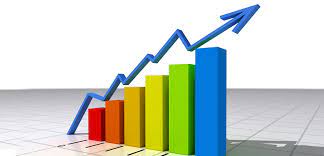The global syngas and derivative market is set to witness a remarkable 9.1% compound annual growth rate (CAGR) between 2021 and 2031, with an expected capacity of 469,000 MWth by 2031, according to Transparency Market Research Inc.
The syngas market, an essential feedstock for chemicals and fuels, is gaining momentum in the energy sector, and its development is of great interest in Africa.
Read also: SoberTech addiction recovery technology to spread across Africa
Syngas Revolutionising Africa’s Energy Landscape
In recent years, power-to-gas technologies have been making waves across the African continent. These technologies enable surplus electricity, often sourced from renewables, to be converted into syngas, hydrogen, or methane. The resultant syngas and its derivatives can be effectively harnessed for energy storage and grid balancing, presenting a promising trend within the energy sector.
The significance of syngas lies in its capacity to serve as a feedstock for the production of various chemicals and fuels, including methanol, ammonia, and synthetic natural gas (SNG). The increasing demand for these products, driven by both industrial and consumer needs, has been a key factor propelling the syngas market’s growth.
The adoption of renewable energy sources for syngas production has been a growing trend in the African region. Biomass and biogas are being increasingly used to produce syngas, driven by mounting environmental concerns and the need for sustainable, low-carbon alternatives.
In regions endowed with abundant coal reserves, such as China, coal-to-syngas projects have gained significant traction. These projects are designed to convert coal into syngas for a variety of applications, including power generation and chemicals.
Steam methane reforming (SMR) stands out as a dominant method for syngas production. The availability of low-cost natural gas and the development of advanced SMR technologies are key factors expected to propel the market’s growth. SMR’s importance in Africa’s energy landscape is increasingly recognized.
The global syngas and derivative market is primarily influenced by a few dominant international players, with mergers and acquisitions being a central part of their growth strategy. Key players include Siemens AG, Sasol Ltd., Syngas Technology LLC, the Linde Group, Air Liquide SA, SES Gasification Technology, SunGas Renewables and AMEC Foster Wheeler Plc.
Pioneering Developments in Africa
BASF SE introduced its “syngas fermentation platform” in 2023, which uses microorganisms to convert syngas into chemicals such as ethanol, propanol, and butanol. CF Industries Holdings, Inc. expanded its syngas production capacity in 2023 at its Donaldsonville, Louisiana plant. Dow Inc. unveiled a new syngas-to-olefins technology in 2023, enabling the production of ethylene and propylene from syngas, while Haldor Topsoe A/S signed an agreement with Nacero Inc. in 2022 to provide syngas production technology for Nacero’s new green ammonia plant in Louisiana.
ABB pioneers sustainable solutions for Egypt’s greener future
Promising Market Trends for Africa’s Syngas Sector
As environmental concerns grow, the demand for cleaner syngas production methods, including carbon capture and utilisation (CCU) technologies, is on the rise. These approaches align with Africa’s commitment to environmentally sustainable energy solutions.
Hydrogen’s growing role as a clean energy carrier presents opportunities for syngas, as hydrogen is a significant component of syngas. This development can significantly boost the syngas market and enhance Africa’s energy landscape.
Ongoing research and development endeavours have yielded technological advancements in syngas production and utilisation. These innovations can enhance efficiency and cost-effectiveness, further stimulating market growth in Africa.
The global syngas and derivative market is experiencing a promising growth trajectory, with Africa taking substantial strides in harnessing the potential of syngas. The energy sector is increasingly turning to syngas as a key component of its clean and sustainable energy solutions, helping address both environmental concerns and the rising demand for chemical products and fuels. Africa’s syngas journey is not only a testament to the region’s commitment to environmental sustainability but also a significant stride toward achieving a more diversified and cleaner energy landscape.











